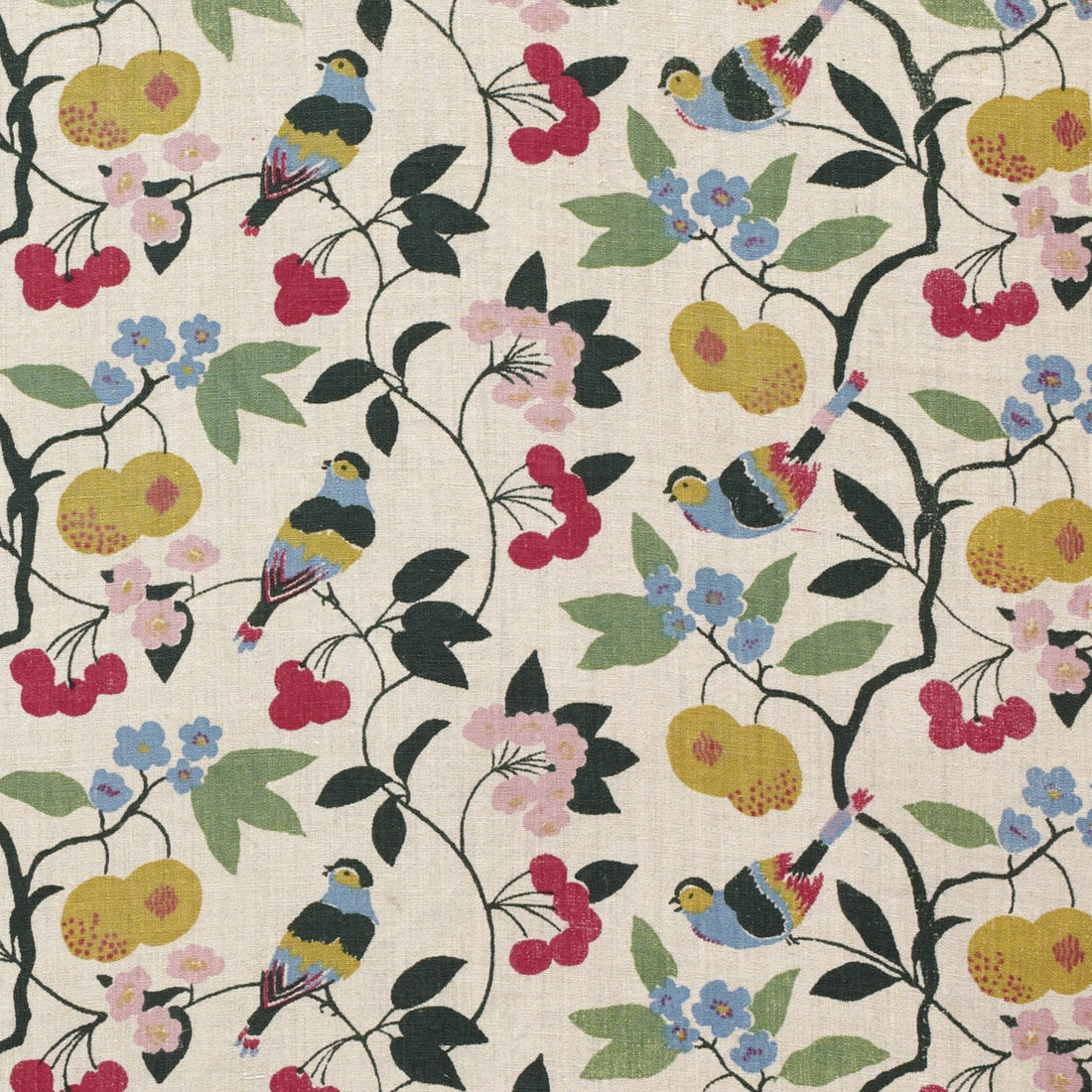
Danish Textile Prints: 100 Years of Craft and Design
Printed textiles are deceptively simple: at first glance a repeat, a motif, a swathe of cloth with a never-ending pattern. Look closer, and they reveal an economy of making through images and patterns, rhythm and repetition, tactility and texture. It is colour and light playing together on two-dimensional surfaces to hint at depth. Danish Textile Prints: 100 Years of Craft and Design, by Kirsten Toftegaard, head and curator of Fashion and Textiles at Designmuseum Danmark, invites us to look beneath the surface. Drawing on the museum’s remarkable collection, it offers the first sustained account of a craft central to Danish interiors, yet too often overlooked in the broader history of design.

Margrethe Odgaard, “Fold – Unfold”, Bomuldsdug, 2010. Photo: Designmuseum Danmark / Pernille Klemp
Textile printing enhances woven textiles through techniques ranging from batik and hand-block to screen print and digital transfer. The results span from unique experimental works to industrial yardage, united by the maker’s desire to marry surface and use, ornament and function. The Danish chapter of this story begins in the late 1920s and crystallises in the 1930s with Marie Gudme Leth, who established Denmark’s first textile printing class at the School of Arts and Crafts. She taught a generation to think of print as a language where repeat, scale and colour converse with furniture, light and architecture.
 Helga Foght. “Harlekin”, Hør, 1949. Photo: Designmuseum Danmark / Pernille Klemp
Helga Foght. “Harlekin”, Hør, 1949. Photo: Designmuseum Danmark / Pernille Klemp
Alongside Leth stand Helga Foght, Inge Ingetoft, Dorte Raaschou and Grete Ehs Østergaard, whose approaches varied from the experimental, to the commercial, and the artisanal — yet all shared a sense of wit and clarity. Later designers such as Margrethe Odgaard and Vibeke Riisberg continue to explore surface and scale, weaving ecological awareness and digital processes into the tradition.
 Bodil Bødtker-Næss, Bomuld, 1965. Photo: Designmuseum Danmark / Pernille Klemp
Bodil Bødtker-Næss, Bomuld, 1965. Photo: Designmuseum Danmark / Pernille Klemp
The book stitches together art, craft, and industry into a single, vividly patterned whole, revealing the full sweep of Designmuseum Danmark’s collection, from theatrical prints to everyday household fabrics. By presenting these materials side by side, it reframes textile printing as a field of invention, where modernity met handcraft. Divided into chapters that trace the language of pattern, the dialogue between makers and manufacturers, and the artistry of print in artisanal clothing, the publication offers both a visual journey and a study in rhythm and repetition.
 Ruth Hull, Silketørklæde, 1950-1960. Photo: Designmuseum Danmark / Pernille Klemp
Ruth Hull, Silketørklæde, 1950-1960. Photo: Designmuseum Danmark / Pernille Klemp
Here lies the power of print in all its versatility. A single technique can feel intimate (a hand-printed napkin, perhaps) or monumental (a ceiling-to-floor curtain that defines a room). A shift in scale or colour changes the mood; a choice of material alters how light is caught or diffused. The book’s essays and generous images make a persuasive case for giving printed textiles their rightful place in design history.
Pattern, it reminds us, is never mere ornament, but a language printed, dyed and repeated across the fabric of modern life.
-
Further Information:

Danish Textile Prints: 100 Years of Craft and Design is available now from Stranberg Publishing.
The Power of Print: 100 Years of Danish Textile Printing at Designmuseum Danmark is on show until 4 January 2025.
-
Image Credits:
Lead: Kirsebær’ (Cherries) print by Marie Gudme Leth.
All other images as credited in photo captions.
